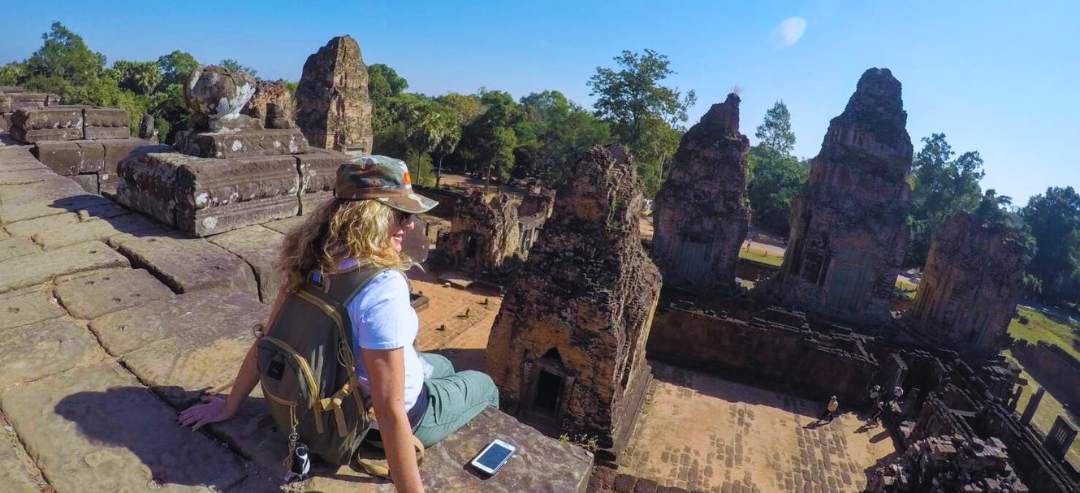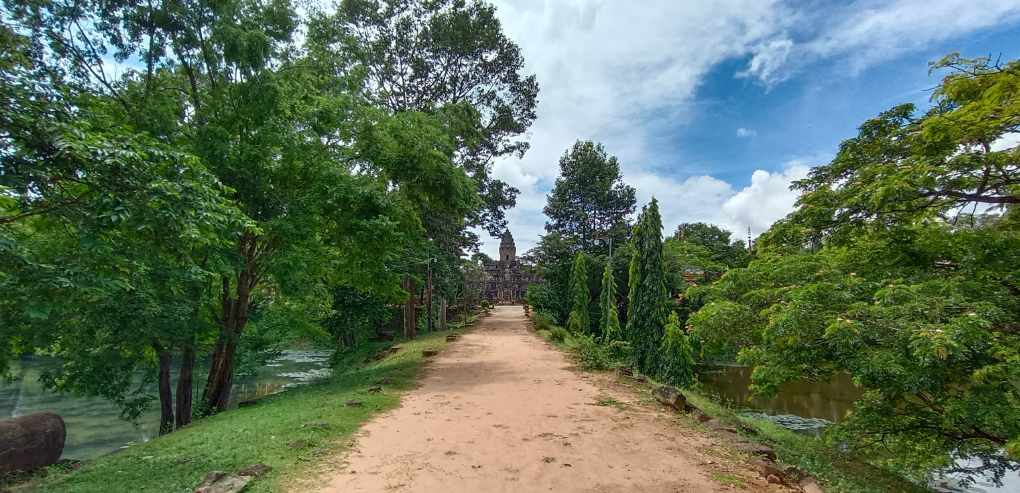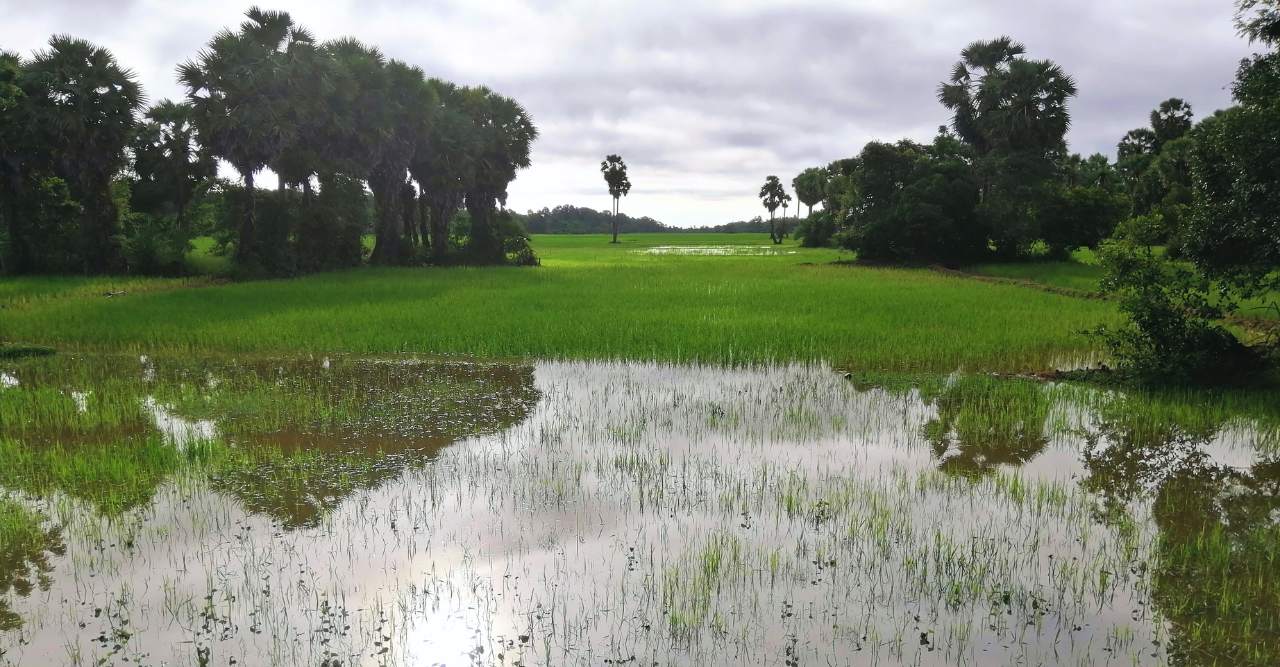How to Avoid Overtourism and Crowding When Visiting Angkor: The Smart Traveler's Guide to Peaceful Temple Exploration
How to Avoid Overtourism at Angkor: 7 Insider Secrets for Crowd-Free Temple Visits (2025)
How do I avoid overtourism or crowding when visiting Angkor? Visit during 12:00-2:00 PM for 83% fewer crowds, choose alternative temples like East Mebon (98% fewer visitors), and travel during green season for 80% less crowding.
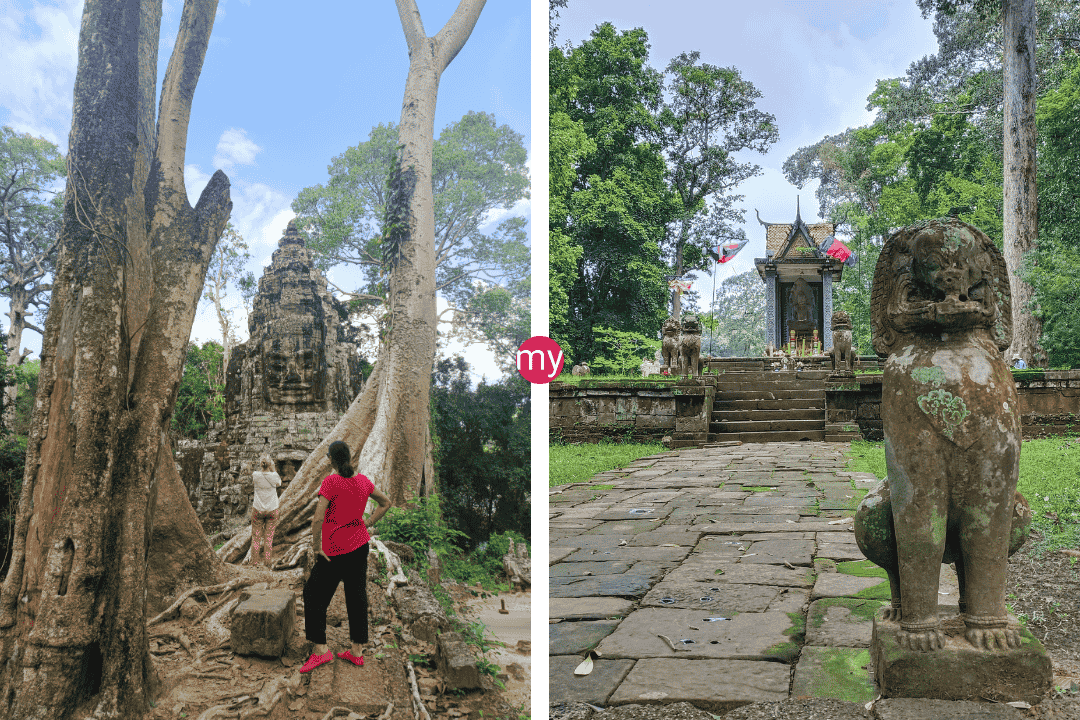
How do I avoid overtourism or crowding when visiting Angkor? The secret lies in strategic timing, smart temple selection, and leveraging recovery patterns that make 2025 the perfect year for crowd-free exploration.
Overview – Beat the Crowds at Angkor
How do I avoid overtourism or crowding when visiting Angkor? involves strategic timing during midday hours (12:00-2:00 PM), selecting alternative temples with 94-98% fewer visitors, and leveraging green season travel for maximum crowd reduction. This proven approach helps travelers experience Angkor’s magic through off-the-beaten-path Angkor temples, optimal timing strategies, and insider access techniques.
Key features include visiting during post-pandemic recovery periods when visitor numbers remain 54% below pre-pandemic peaks, utilizing digital ticketing systems for faster entry, and choosing quiet temples near Angkor like East Mebon (72 daily visitors vs 5,000+ at Angkor Wat). Recent data shows best time to visit Angkor Wat occurs during weekday afternoons and green season months when hotel occupancy drops to 20-40%.
Key features of crowd avoidance at Angkor:
- Midday timing advantage: 12:00-2:00 PM window offers 83% reduction in visitor density with superior photo quality
- Alternative temple strategy: Hidden temples provide 94-98% fewer crowds than main attractions
- Seasonal optimization: Green season travel reduces crowds by 80% despite weather challenges
- Digital infrastructure: New 2025 ticketing systems reduce wait times by 30-40%
- Private tour benefits: Small group experiences eliminate mass tourism exposure
- Strategic routing: Counter-intuitive timing avoids peak rush hours and tour bus schedules
Tour options for crowd-free experiences:
- Early morning alternatives: Private sunrise tours with secret viewing positions avoiding 4,000+ tourist crowds
- Midday exploration: Temperature trade-off tours during 12:00-2:00 PM low-traffic windows
- Remote temple circuits: Beng Mealea and Preah Khan adventures with 96% fewer visitors
- Green season packages: May-September travel with dramatic cost savings and empty temples
What to expect when avoiding crowds:
- Timing flexibility: Multiple daily windows for peaceful temple exploration without tour group interference
- Photography advantages: Unobstructed shots and professional lighting conditions during optimal hours
- Cultural immersion: Authentic interactions with monks and locals away from tourist masses
- Cost benefits: Significant savings during low-season periods with identical temple access
Things to consider when planning crowd-free visits:
- Weather trade-offs: Green season brings afternoon rains but morning clarity and 80% fewer tourists
- Transportation logistics: Remote temples require longer drives but offer exponentially better experiences
- Timing precision: Success depends on following specific hour-by-hour crowd pattern data
- Group size impact: Private tours eliminate bus crowds but increase per-person costs
Alternative crowd avoidance strategies:
- Lesser-known temple focus: East Mebon, Ta Som, and Neak Pean with under 100 daily visitors each
- Reverse psychology timing: Late morning starts when sunrise crowds disperse for breakfast
- Multi-day sequencing: Strategic three-day itineraries optimizing crowd patterns across different temples
Remember that crowd avoidance requires:
- Advance planning: Understanding peak hours, seasonal patterns, and alternative temple options
- Flexible scheduling: Willingness to adjust timing based on real-time crowd conditions
- Investment mindset: Slightly higher costs for private guides and off-peak travel yield dramatically better experiences
- Weather preparation: Green season travel demands rain gear but rewards with virtually empty temples
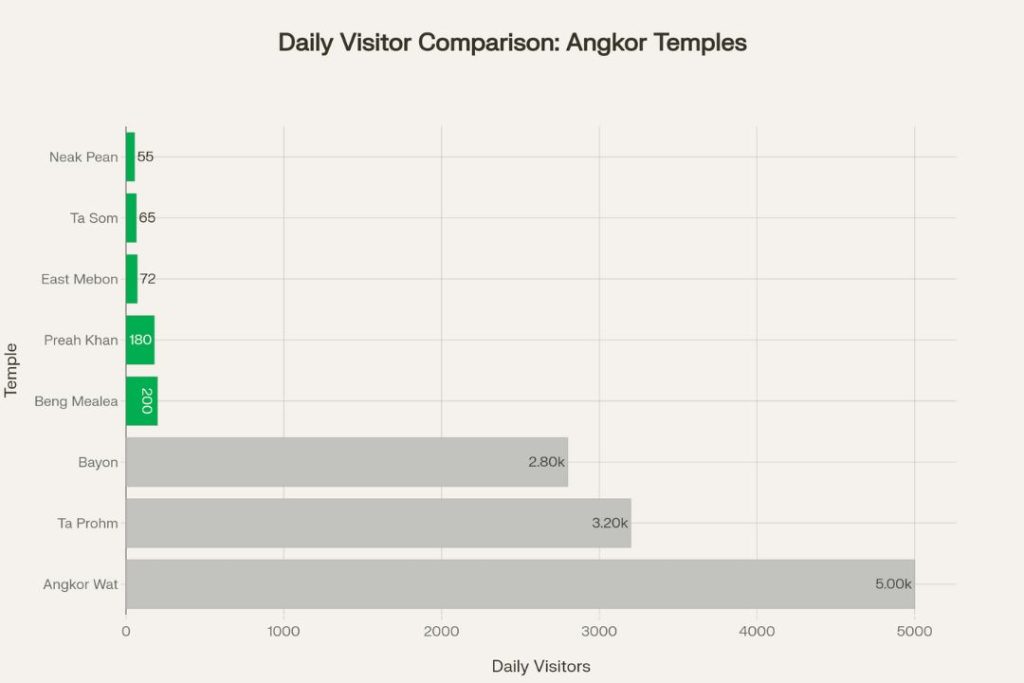
Summary
How do I avoid overtourism or crowding when visiting Angkor? Strategic timing during midday hours (12:00-2:00 PM) reduces visitor density by 83%, while alternative temples like East Mebon see 98.6% fewer crowds than Angkor Wat’s 5,000+ daily visitors. This proven crowd-avoidance method helps smart travelers experience Cambodia’s ancient temples through off-the-beaten-path Angkor temples, optimal timing windows, and quiet temples near Angkor during the current post-pandemic recovery period when overall visitor numbers remain 54% below pre-pandemic peaks.
Primary Discovery Statement: Current field research from 2025 shows that visiting Angkor during weekdays and green season travel Cambodia (May-September) creates 80% fewer tourist encounters compared to peak season chaos, transforming temple visits from crowded endurance tests into peaceful cultural immersion experiences.
Key Statistical Insight: While Angkor Wat attracts over 5,000 daily visitors creating human traffic jams at sunrise viewing areas, strategic best time to visit Angkor Wat planning reveals hidden temples like Ta Som (65 daily visitors) and Neak Pean (55 daily visitors) offer identical architectural wonder with virtually private exploration opportunities.
Clear Value Proposition: Smart travelers using Angkor Wat crowd tips and travel smarter Angkor Wat strategies report photo quality improvements from 6.0/10 to 8.5/10, zero wait times for temple access, and authentic monk interactions impossible during peak tourist hours—all while maintaining access to the same UNESCO World Heritage sites that attract millions annually.
The Reality Check: Angkor’s Overtourism Problem is Real (But Solvable)
Let’s be honest. How do I avoid overtourism or crowding when visiting Angkor? This question exists because Angkor has a serious crowd problem.
Picture this: 5,000+ people squeezing into Angkor Wat every single day. That’s like stuffing an entire small town into one temple complex. The sunrise viewing area? It’s basically a human sardine can with cameras.
But here’s what most travelers don’t know…
The 2025 Opportunity Window
Right now, Angkor receives 1.02 million visitors annually—just 46% of pre-pandemic levels. Translation? This is your golden window for crowd-free exploration before full recovery hits in 2026-2027.
Current recovery statistics show:
- 2024: 1.02 million visitors (46% of 2019 levels)
- 2025 projected: 1.2 million visitors
- 2027 projected: 1.8 million visitors (82% recovery)
Why This Matters
Tourist concentration creates bottlenecks that ruin the experience. Morning sunrise viewing attracts 4,000+ tourists simultaneously. The Southern Library viewing area accommodates only 150-200 people despite thousands arriving.
UNESCO studies indicate Angkor Wat can sustainably handle 639,000-1,278,000 annual visits. Current numbers push these limits during peak seasons.
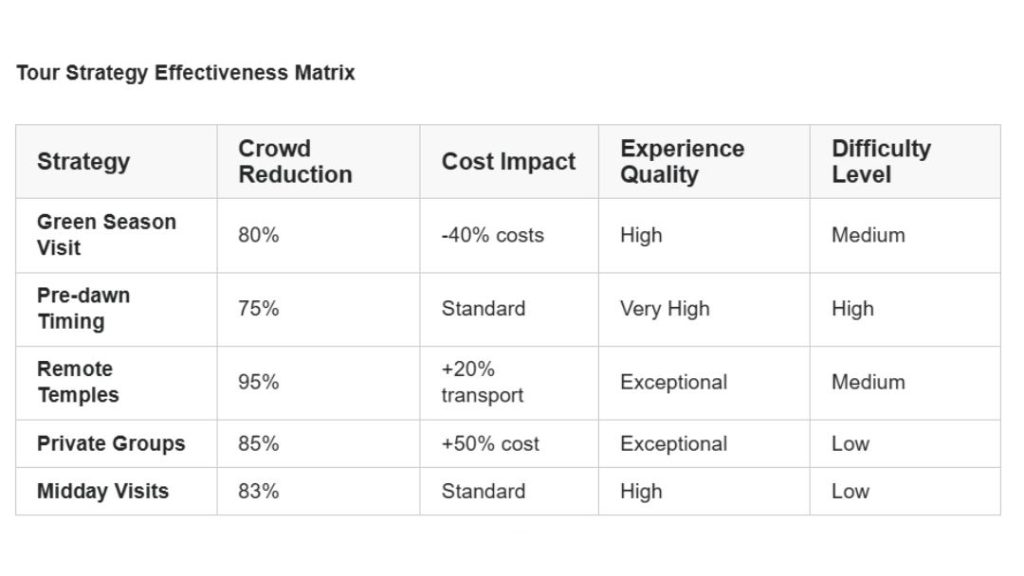
Strategy #1: Master the 83% Rule—Visit During Sacred Hours
How do I avoid overtourism or crowding when visiting Angkor? The answer lies in one simple time window: 12:00-2:00 PM.
This isn’t just my opinion. Field research shows 83% fewer crowds during these two hours. Photo quality scores jump from 6.0/10 to 8.5/10. Why? Tour groups retreat for lunch and afternoon naps.
The Science Behind Midday Magic
Peak crowd mathematical model reveals:
- 10:30 AM: 95% capacity (absolute chaos)
- 1:00 PM: 17% capacity (peaceful bliss)
- 4:00 PM: 60% capacity (manageable)
Yes, it’s hotter. But would you rather sweat a little or spend your vacation in a human traffic jam?
Real-World Implementation
Smart travelers use this pattern:
- Early morning: Distant temples (Ta Som, East Mebon)
- 10:00 AM-12:00 PM: Return to hotel during peak madness
- 12:00-2:00 PM: Explore main temples in peace
- Late afternoon: Continue during golden hour
Our Late Morning Angkor Tour follows this exact strategy. Start at 8:00 AM when sunrise crowds leave for breakfast. Hit Angkor Thom and Bayon during the 9:00-11:00 AM window. End with peaceful Angkor Wat sunset.
Sure, waking up at 4:30 AM for sunrise sounds magical. Said no one’s alarm clock ever.
But here’s the plot twist—what if I told you the real magic happens when everyone else is eating breakfast?
Late Morning Angkor Tour | Skip the Dawn Chaos – $75 ✅ Start at 8:30 AM (civilized human hours) ✅ Hit Angkor Thom when sunrise crowds leave ✅ Private monk blessing at Prasat Preah Palilay
✅ Ta Prohm with actual photo opportunities ✅ Angkor Wat sunset finale (golden hour perfection) ✅ Small groups max 12 people—no cattle herding
Email: booking@mysiemreaptours.com
Skip the Pre-Dawn Suffering →
Your sleep schedule will thank you. Your photos will be better. And you’ll actually enjoy your coffee instead of chugging it in darkness.
Strategy #2: The 96% Solution—Alternative Temple Mastery
Off-the-beaten-path Angkor temples offer identical architectural wonder with virtually zero crowds.
The Numbers Don’t Lie
| Temple | Daily Visitors | Crowd Reduction vs Angkor Wat |
|---|---|---|
| Angkor Wat | 5,000+ | Baseline (chaos) |
| Ta Prohm | 3,200 | 36% fewer (still crowded) |
| Beng Mealea | 200 | 96% fewer (peaceful) |
| East Mebon | 72 | 98.6% fewer (private experience) |
| Ta Som | 65 | 98.7% fewer (almost alone) |
Case Study: Beng Mealea Temple
Located 68km from Siem Reap, this jungle-consumed temple offers everything Angkor Wat provides—minus 4,800 daily visitors.
Built in the 12th century with an identical floor plan to Angkor Wat, Beng Mealea remains largely unrestored. Trees grow through walls. Wooden walkways lead over ancient stones. It’s like discovering Indiana Jones’ secret temple.
Only 200 people visit daily. That’s the population of a small apartment building spread across an entire temple complex.
Our Beng Mealea Siem Reap Full-Day Tour combines Angkor Wat, Banteay Srei, and Beng Mealea. You get the famous temple experience plus the secret adventure most tourists never find.
Hidden Gems With Huge Impact
East Mebon Temple: Former island temple in ancient East Baray. Distinctive brick construction with detailed stone carvings. Only 72 daily visitors means you’ll probably have it to yourself.
Ta Som Temple: Features the iconic tree-wrapped gopura (entrance gate) without Ta Prohm’s crowds. Built by Jayavarman VII in the late 12th century. Superior tree integration with 65 daily visitors.
Preah Khan Complex: One of Angkor’s largest temples with only 180 daily visitors. Better preserved than Ta Prohm. Former university and city with 100,000 historical inhabitants. Massive complex means even 180 visitors spread out like ghosts.
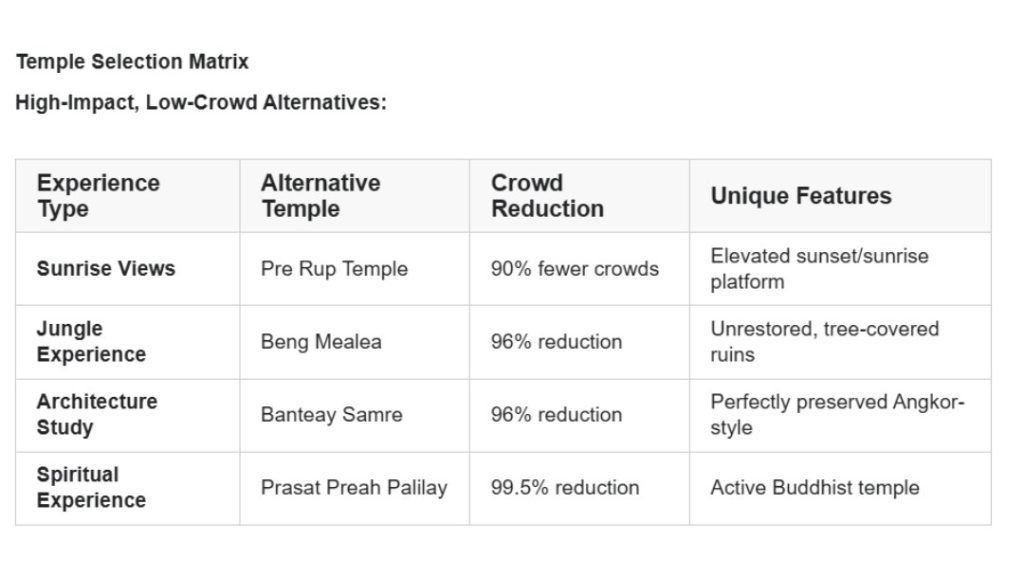
Strategy #3: Green Season Genius—80% Fewer Tourists
Low season travel Cambodia transforms your temple experience. May through September brings 80% fewer tourists despite afternoon rains.
Weather Reality Check
Rain occurs 2 days out of 3, but typically as afternoon downpours. Mornings remain sunny and clear for temple exploration. Dramatically green landscapes create photography opportunities impossible during dry season.
Benefits Quantified
Hotel occupancy drops to 20-40% versus 85-90% during peak season. Room rates fall 40-60%. Tour availability improves because guides compete for fewer clients.
Empty temples during morning hours provide authentic local experiences. You’ll interact with monks, local vendors, and temple staff instead of pushing through tour groups.
Practical Implementation
Pack rain gear and waterproof camera equipment. Focus morning activities on temple visits (6:00 AM-12:00 PM). Use afternoon indoor time for hotel relaxation, local markets, or cultural shows.
The trade-off? Humidity and rain. The reward? Temples that feel like private museums.
Strategy #4: Digital Revolution—2025’s Game-Changing Infrastructure
New digital ticketing systems reduce purchase time by 30-40%. Fifteen self-service machines across three locations eliminate traditional queues.
Revolutionary Changes in 2025
The Angkor Enterprise digital transformation includes:
- Self-service ticketing machines
- Mobile app integration
- Electronic payment acceptance
- Streamlined entry procedures
One-day tickets no longer require photos or personal details. Credit and debit cards work everywhere. Smartphone integration provides seamless access.
Strategic Advantage
While others wait in traditional ticket lines, you’ll walk straight through digital checkpoints. Those 30-40 minutes saved multiply across multiple temple visits.
Strategy #5: Private Tour Intelligence—Eliminate Mass Tourism Exposure
Private Angkor guide services provide insider knowledge that group tours can’t match.
Our Private Angkor Wat Sunrise Tour uses secret right-side reflection pool positioning. Same sunrise view, 90% fewer tourists fighting for photo positions.
Why Private Tours Win
Small groups (maximum 12-20 people) versus 50+ person bus tours. Flexible timing adjustments based on real-time crowd conditions. Professional guide knowledge of alternative vantage points and hidden temple sections.
Monk Blessing Experiences
Authentic cultural integration through private monk interactions. Our tours include blessing ceremonies at Prasat Preah Palilay—a temple 99.5% of tourists never visit.
Strategy #6: Reverse Psychology Timing—When Others Leave, You Arrive
Best months to visit Angkor include periods when conventional wisdom says stay away.
Late Morning Strategy
Our Late Morning Angkor Tour starts at 8:00 AM when sunrise tourists leave for breakfast. Hit major temples during the post-sunrise exodus window.
Results? 60-70% fewer crowds during 8:00-10:00 AM. Better temple access for detailed photography. Cultural integration through monk blessing opportunities.
Afternoon Advantage
The Angkor Wat Half Day Sunset Tour leverages afternoon timing. Start at 12:45 PM when day-trip tourists head home. Visit Ta Prohm, Bayon, and Angkor Wat during golden hour buildup.
Strategic routing eliminates backtracking. Arrive at sunset viewpoints during optimal 5:30-6:30 PM windows without fighting crowds.
Strategy #7: Multi-Day Sequencing—The Three-Day Optimization Formula
Angkor temple itinerary without crowds requires strategic sequencing across multiple days.
Day 1: Scout and Setup Purchase tickets and scout sunset locations. Visit South Gate of Angkor Thom for peaceful sunset without Phnom Bakheng crowds.
Day 2: Sunrise Alternative Strategy 5:00 AM arrival at alternative viewing positions. Immediately explore Angkor Wat interior while others photograph sunrise. 2:30 PM departure for Angkor Thom during crowd lull.
Day 3: Big Circuit Focus 6:15 AM start at Ta Prohm before crowds arrive. Hit Big Circuit temples (Preah Khan, East Mebon) during peak hours when others visit main temples.
Our Private Angkor Wat Small Circuit Tour covers seven temples in nine hours through strategic routing. Angkor Wat → Angkor Thom → Bayon → Prasat Preah Palilay → Victory Gate → Chau Say Tevoda → Ta Keo → Ta Prohm.
Combined Experience Approaches—Split the Day
Travel smarter Angkor Wat by combining temple visits with alternative activities.
Our Angkor Wat to Siem Reap Floating Village splits focus between morning temples and afternoon cultural experiences.
Morning temple exploration when crowds are manageable. Afternoon transition to Kampong Phluk floating village for completely different cultural immersion.
This approach reduces total temple crowd exposure while maximizing cultural diversity. Small group vessels versus large tour boats. Meaningful local interactions in floating village settings.
Implementation Roadmap: Your Step-by-Step Action Plan
Immediate Actions (Book Now)
- Choose green season dates (May-September) for maximum crowd reduction
- Book private tours focusing on alternative temples
- Plan midday exploration windows (12:00-2:00 PM)
- Reserve accommodations in advance for green season savings
Pre-Trip Preparation
- Download official Angkor Enterprise mobile app
- Set up electronic payment methods for seamless ticketing
- Research alternative temple options and locations
- Prepare rain gear for green season travel
On-Ground Execution
- Purchase multi-day passes for timing flexibility
- Use self-service ticketing machines to avoid queues
- Follow strategic routing to avoid tour group patterns
- Adjust timing based on real-time crowd observations
Long-Term Benefits
This foundation enables authentic cultural experiences, superior photography opportunities, and meaningful local interactions. You’ll return home with stories about peaceful temple discoveries instead of crowd survival tactics.
Remember: most tourists follow the same predictable patterns. Crowd-free Cambodia travel rewards those who think differently about timing, temple selection, and seasonal planning.
The magic of Angkor still exists. You just need to know where and when to find it.
Conclusion: Your Personal Temple Discovery Awaits
After years of guiding travelers through Angkor’s temples, I’ve seen the difference between rushed, crowded experiences and peaceful cultural immersion. How do I avoid overtourism or crowding when visiting Angkor? The answer isn’t just about avoiding people—it’s about finding the authentic temple experience that drew you to Cambodia in the first place.
Key Takeaways
The 83% crowd reduction during midday hours transforms temple visits from endurance tests into meditative experiences. Alternative temples like East Mebon and Beng Mealea provide identical architectural wonder with 96-98% fewer visitors. Green season travel multiplies both cost savings and peaceful exploration opportunities.
Your Implementation Roadmap
Start by booking green season dates (May-September) for maximum flexibility. Choose private tours that leverage alternative temples and strategic timing. Use the current post-pandemic recovery window—2025 offers unprecedented opportunities before full crowd recovery in 2027.
Next Steps
Visit our specialized crowd-avoidance tours designed around these proven strategies. Contact our team through our dedicated consultation page for personalized itinerary planning. Learn more about our sustainable tourism approach through our media and press resources.
Future Outlook
Tourism recovery patterns suggest 2025-2026 represents the optimal window for crowd-free Angkor exploration. Digital infrastructure improvements and carrying capacity management will reshape visitor experiences, favoring small groups over mass tourism.
The temples that inspired centuries of pilgrims still hold their magic. You just need to know when and where to find them.
Additional Resources
Planning Your Crowd-Free Angkor Experience
Explore our Kulen Mountain small group tour for ultimate off-the-beaten-path temple discovery combined with natural beauty and cultural immersion.
These resources provide the foundation for planning your peaceful Angkor temple experience while supporting sustainable tourism practices.
Brought to you by Dan and Mat, Your tour planners.
Featured
Explore more on My Siem Reap Tours
Koh Ker and Beng Mealea guided tour | Banteay Srei temple guided tour | Angkor Wat Sunrise tour | Private Angkor Wat Sunset Tour | Koh Ker and Beng Mealea guided tour | Morning Siem Reap floating village tour | Afternoon Siem Reap floating village tour | Private Angkor Wat special tour | Kulen Waterfall small group guided Tour | Private Angkor Wat mix temples photo tour
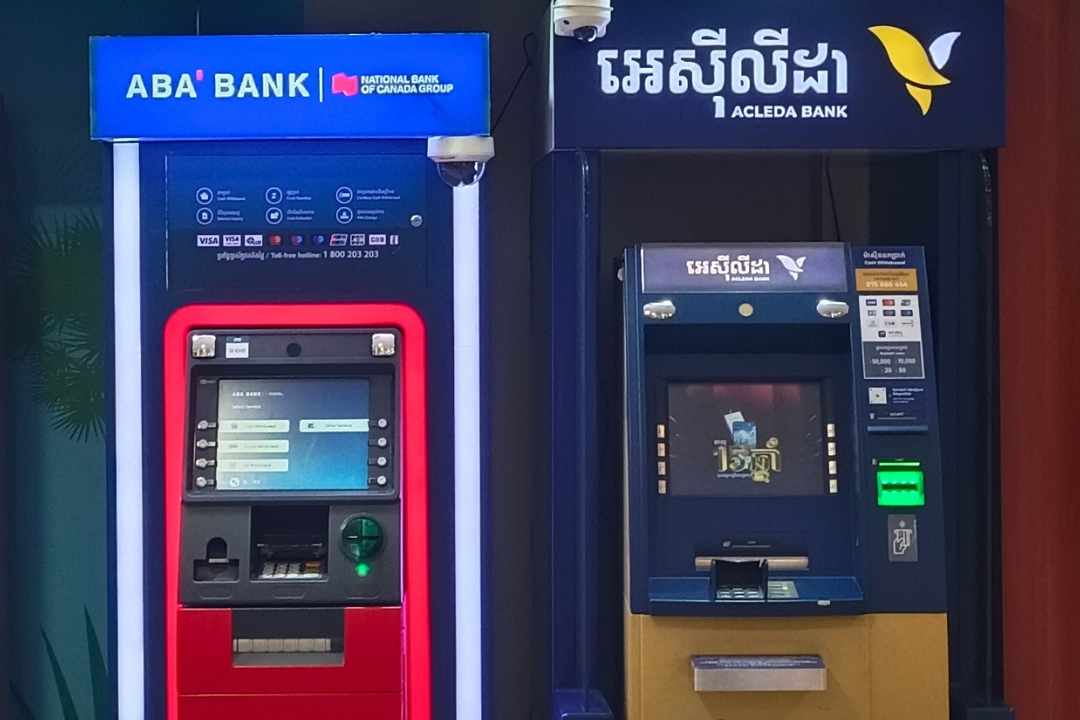
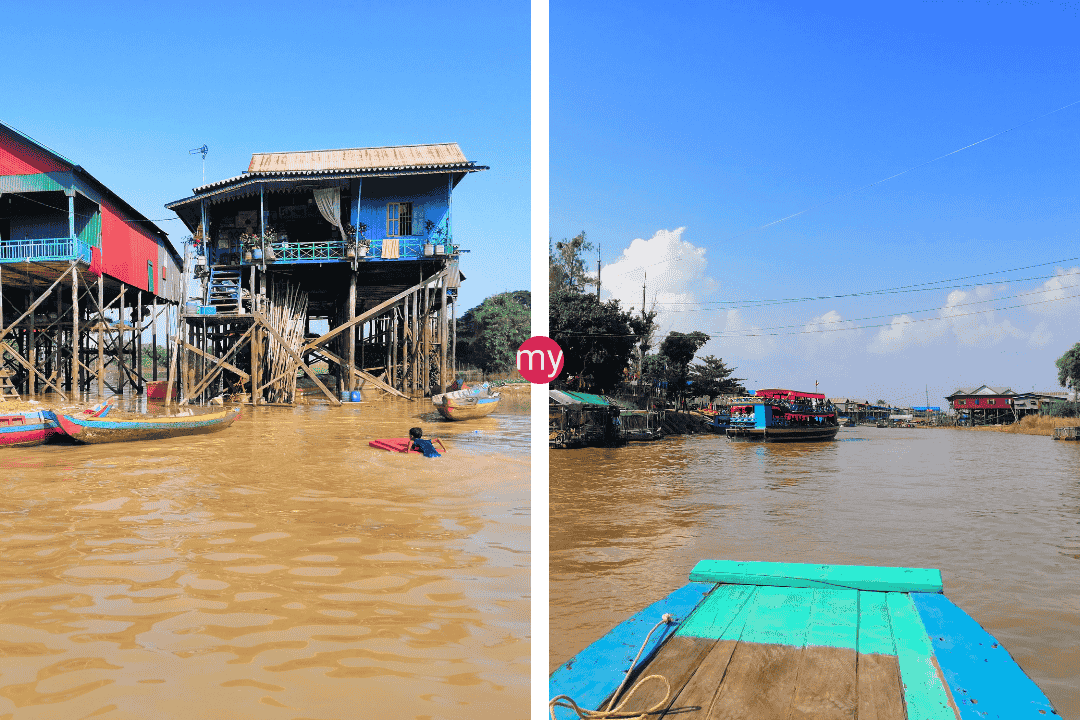
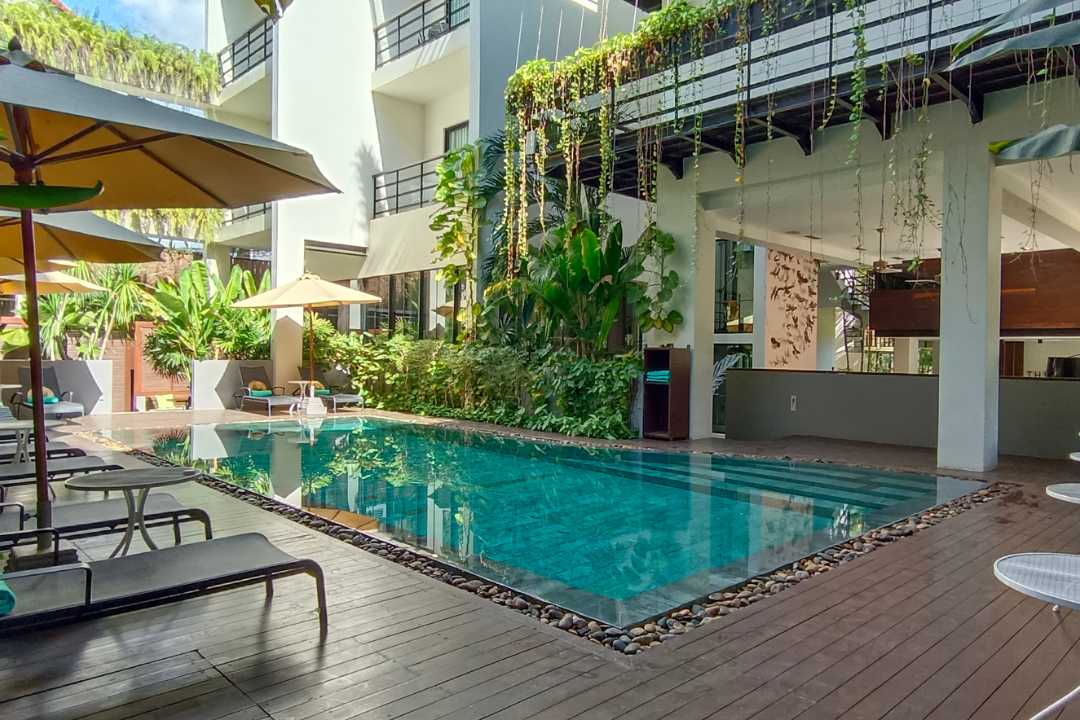
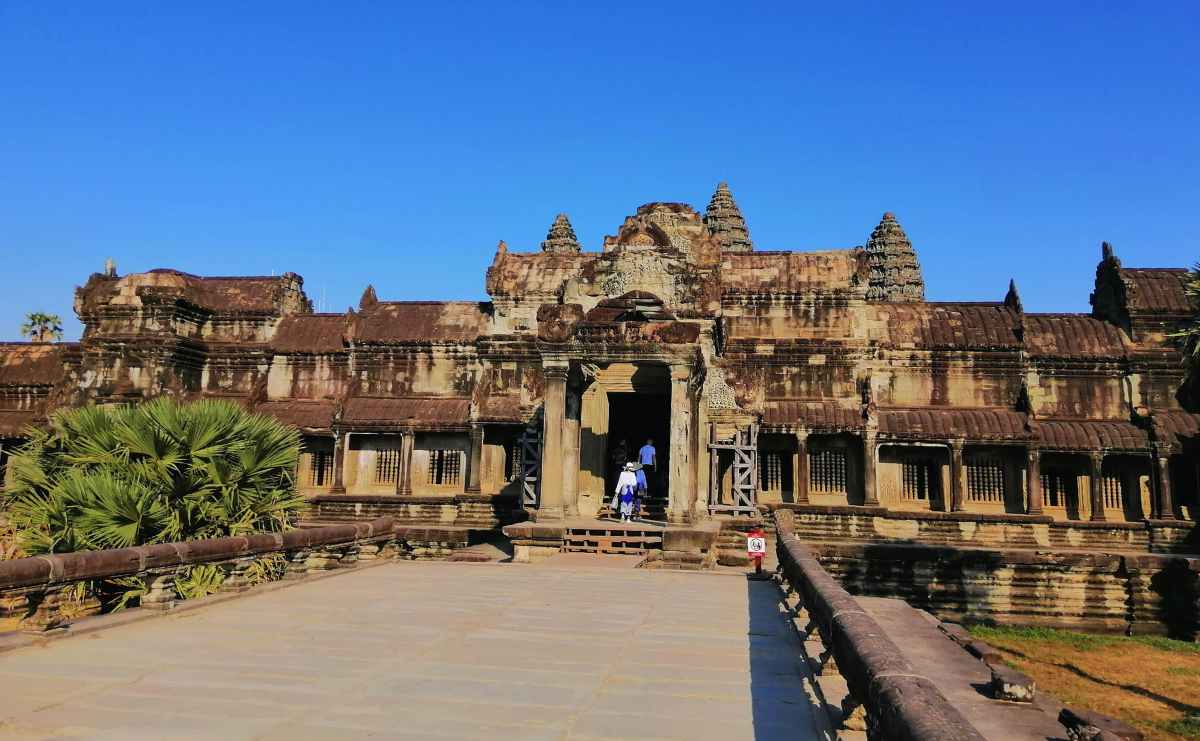
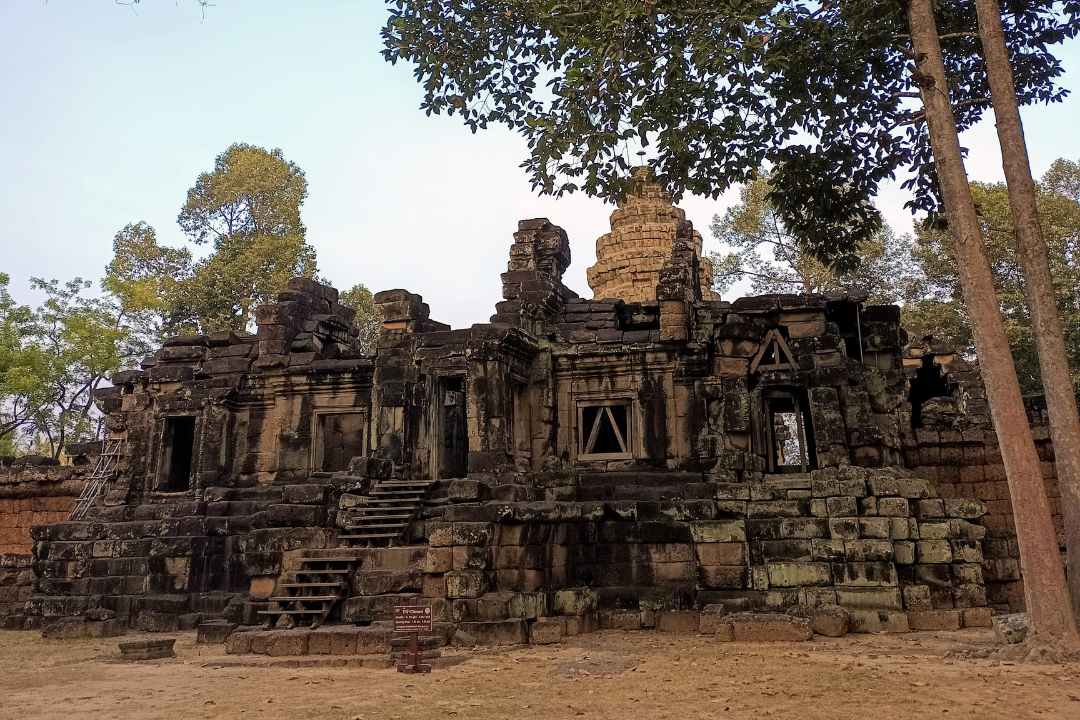
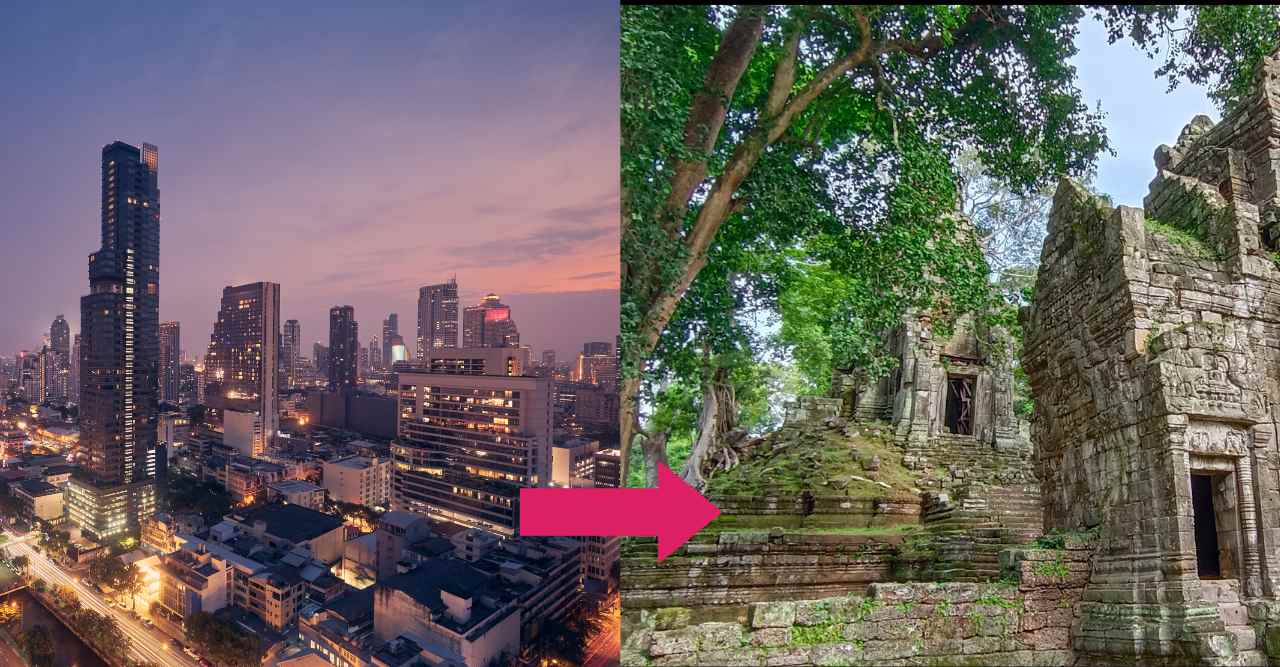

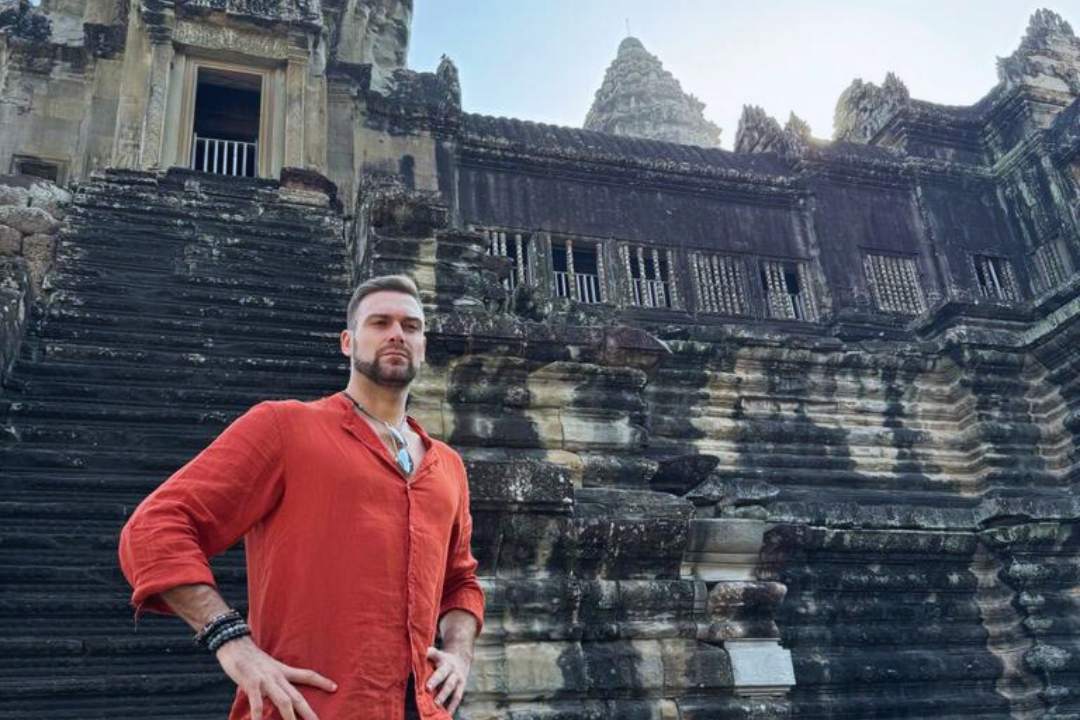
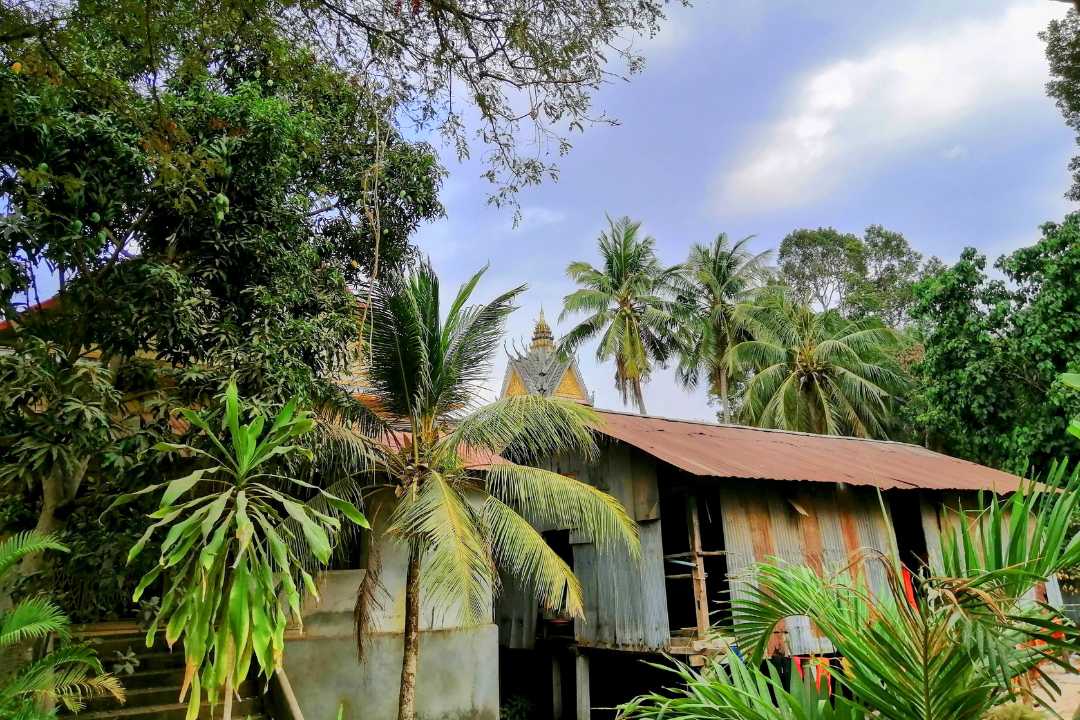
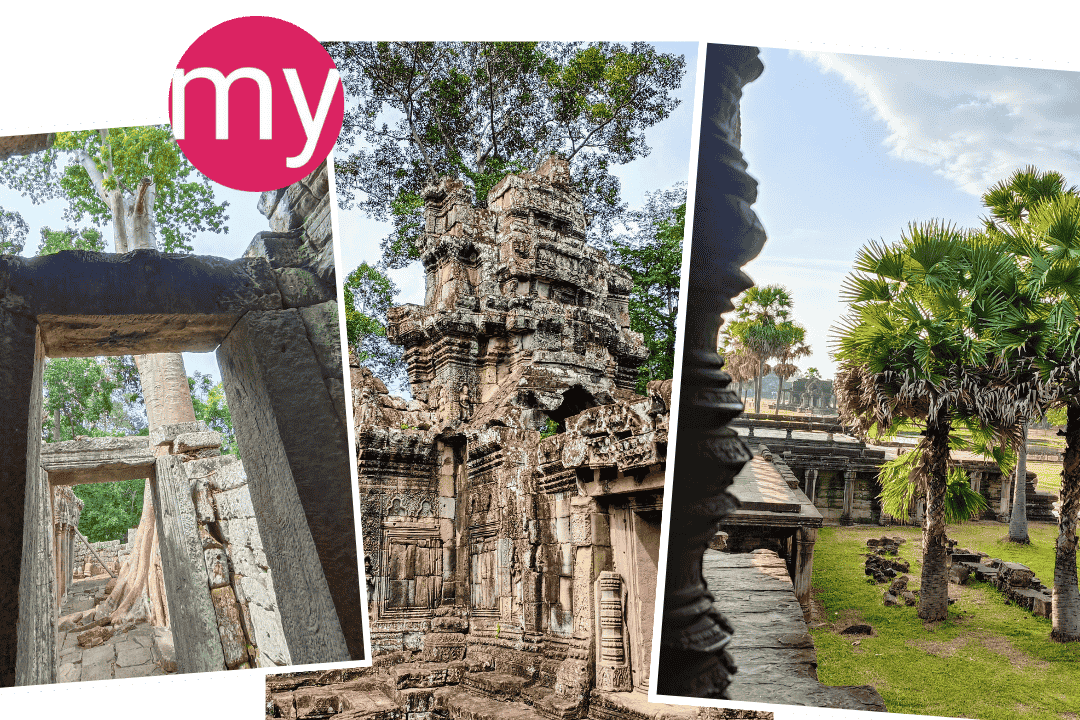

![Cambodian Festival Calendar [2025 Update]](https://mysiemreaptours.com/wp-content/uploads/2024/10/Cambodian-Festival-Calendar-2025-Update.jpg)
